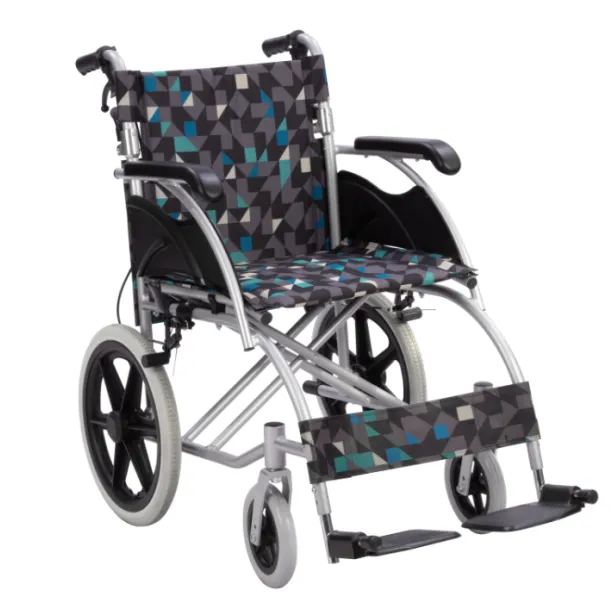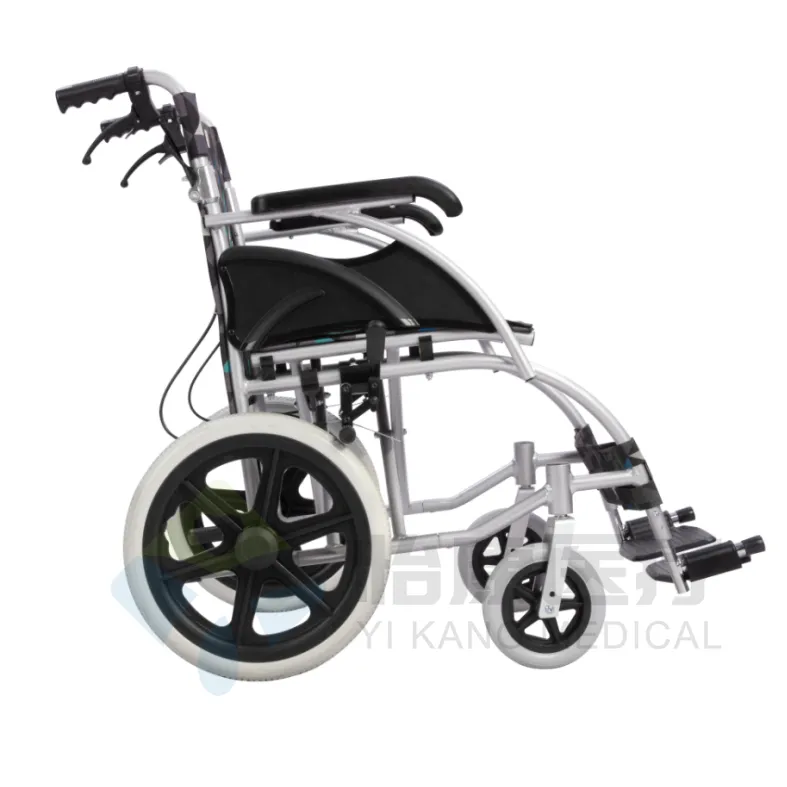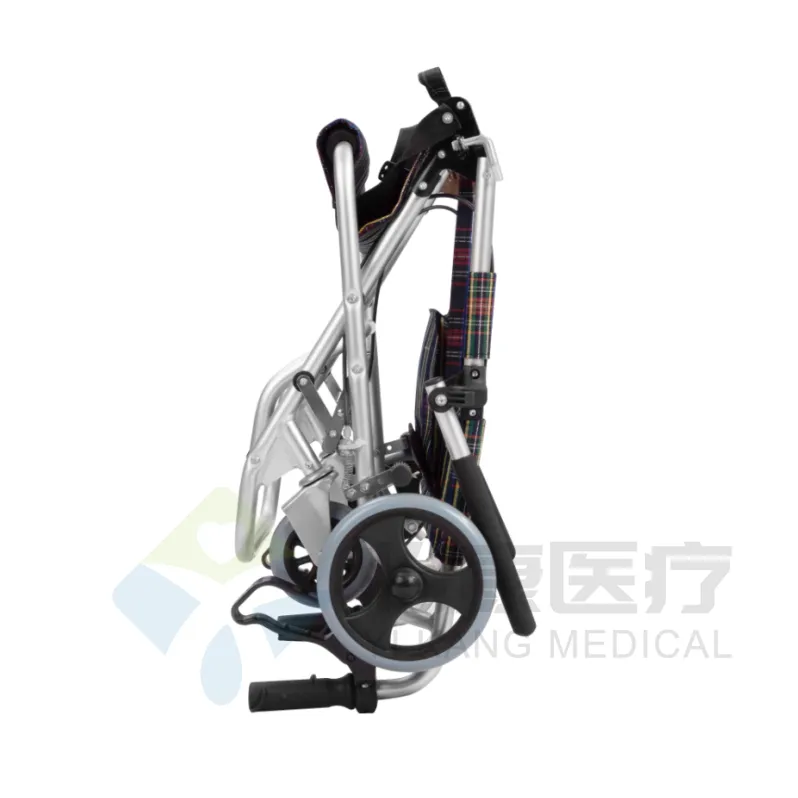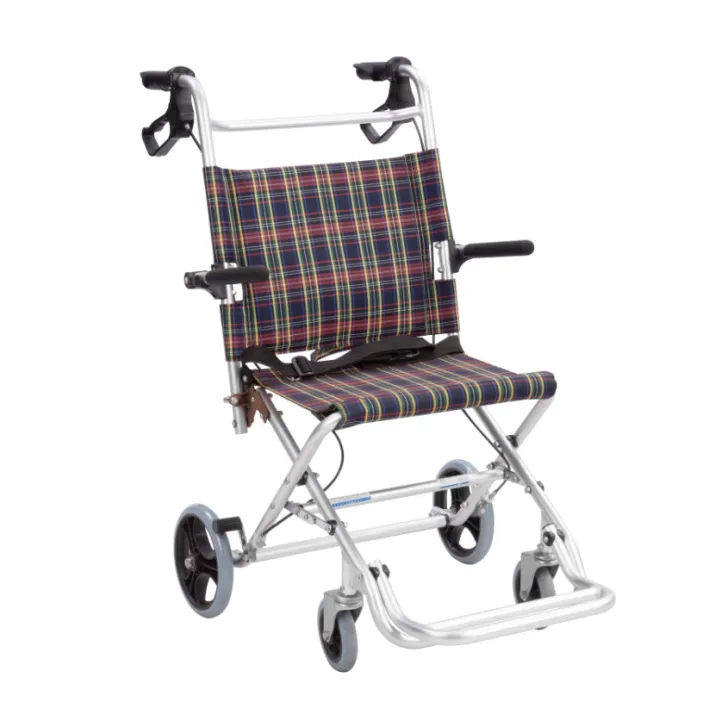As a basic category of mobility assistive devices, manual wheel chairs are widely used in medical, rehabilitation and daily care scenarios. It relies on the user or others to push it to achieve mobility. Compared with electric wheelchairs, its structure is lighter and has lower maintenance costs.
With people's increasing attention to care efficiency and ease of use, the question of "which manual wheel chair is easiest to push" has gradually become the focus of consumers, medical workers and caregivers.
Especially in hospitals, nursing homes and home care environments, the sub-type of transport wheel chair is increasingly mentioned. Transport wheel chair is a type of manual wheel chair, but it has obvious differences from traditional manual wheel chairs in structural design, wheel diameter size, and pushing method.
This article will analyze from multiple professional dimensions such as structural design, wheel size, material weight, control flexibility, and use environment, in order to provide scientific reference for purchase decisions.

What is a manual wheel chair?
A manual wheel chair is a wheelchair device that is pushed by the user or assisted by others. It usually consists of a frame, backrest, seat, front and rear wheels, footrests, armrests, etc. There is no power system or motor, and it relies only on human power, so its design is particularly important in terms of lightweight and mechanical efficiency.
What are the categories of manual wheel chairs?
According to the structure and purpose, manual wheel chairs are mainly divided into the following categories:
1. Standard manual wheel chair: Medium size, suitable for clinical and home use, usually with large rear wheels for users to drive themselves.
2. Transport wheel chair: Small rear wheels, no push handle, need to be pushed by others, suitable for short-distance transfer, hospitals and airports.
3. Lightweight manual wheel chair: Made of aluminum alloy or carbon fiber material, easy to carry and fold, suitable for frequent movement and going out.
4. Heavy manual wheel chair: Reinforced structure, suitable for users with heavier weight, and more difficult to push.
5. Tilting or reclining manual wheel chair: With adjustable backrest, suitable for long-term lying people, but large size and high pushing resistance.
Among them, "transport wheel chair" is often widely discussed as a representative of light weight, portability, and easy to push. Whether it is really "easier to push" as the public believes, it needs to be analyzed in depth from many aspects.

What are the factors that determine whether a manual wheel chair is easy to push?
Before answering "Which manual wheel chair is the easiest to push", it is necessary to clarify the measurement criteria of "easy to push". Pushing resistance is determined by multiple physical and structural factors, including:
1. The weight of the wheelchair
Weight is the most intuitive factor affecting the difficulty of pushing. Generally speaking, the lighter the wheelchair, the easier it is to push. Modern manual wheel chairs generally use lightweight materials such as aluminum alloy, titanium alloy or carbon fiber. Especially for transport wheel chairs, due to the short-distance target usage scenario, the design emphasizes lightness, and the weight is usually 3 to 5 kilograms lower than the standard manual wheel chair.
For example, a typical transport wheel chair weighs only about 7 to 10 kilograms, while the weight of a standard manual wheel chair usually ranges from 12 to 18 kilograms. Weight reduction directly reduces the inertial resistance when pushing.
2. Rear wheel size and material
The size of the rear wheel is directly related to the rolling resistance of the wheelchair. Generally speaking, the larger the wheel diameter, the easier it is to roll and cross small obstacles, but the weight is also heavier. Standard manual wheel chairs are often equipped with 24-inch large wheels, which can be pushed by users themselves and are equipped with push rings. Transport wheel chairs usually use 12-inch or even 8-inch small rear wheels, which are light in weight but have limited crossing ability.
The tire material also plays a key role. Pneumatic tires have high elasticity and low resistance; solid tires are maintenance-free but have high friction; polyurethane materials have both wear resistance and smoothness.
Although the small rear wheels of the transport wheel chair are not convenient for self-driving, they are small and light, with low friction resistance, which makes it easier to push by others.
3. Wheelbase and steering flexibility
The wheelbase refers to the distance between the front and rear wheels. A short wheelbase and a small turning radius are more suitable for use in narrow indoor environments, and also make pushing more flexible. Transport wheel chairs usually have a shorter wheelbase, which significantly improves the controllability and smoothness of pushing in indoor movement or short-distance transportation.
4. Push handle design
The push handle position, thrust transmission angle and armrest material of the manual wheel chair will affect the actual push feel. The push handle height of the transport wheel chair is more suitable for standing pushers, and the ergonomic design makes it easier to apply force and reduce fatigue. However, some standard manual wheel chairs are not optimized for pushers, and the thrust efficiency is relatively low.

What standards should the lightest manual wheel chair have?
In order to clarify the selection direction, we summarize the following five criteria from a professional perspective:
1. The total weight does not exceed 12 kg (empty);
2. The rear wheel diameter is ≥24 inches, and the tread material is solid rubber or pneumatic wheel;
3. Equipped with high-grade bearings to ensure noiseless and unobstructed rolling;
4. The body width is moderate (43-50cm), the center of gravity is stable, and it is conducive to straight driving;
5. The height of the push handle is suitable for the caregiver to hold (90-95cm), and the operation is labor-saving.
If the manual wheel chair meets the above conditions, it can be considered that it has reached the superior standard in terms of pushing efficiency.
Comparative analysis of transport wheel chair and other manual wheel chairs
1. Comparison of pushing resistance
| Category | Average weight | Rear wheel size | Type of promoter | Difficulty of pushing (others) |
| Transport wheel chair | 8-12 kg | 8-12 inches | Others | ★★★★★ |
| Standard manual wheel chair | 12-18 kg | 24 inches | Myself or others | ★★★ |
| Lightweight manual wheel chair | 9-13 kg | 20-24 inches | Myself or others | ★★★★ |
| Heavyweight manual wheel chair | 20-25 kg | 24 inches | Others | ★ |
As can be seen from the above table, the transport wheel chair is the easiest type of manual wheel chair to push when others push it. Its lightweight structure, short wheelbase, small wheel diameter and push handle designed for caregivers give it an absolute advantage in pushing efficiency indoors or on flat roads.
2. Comparison of usage scenarios
· Hospital ward: The transport wheel chair is convenient for nurses to quickly transfer patients.
· Home care: The lightweight and easy-to-store transport wheel chair is more suitable for short-distance travel for the elderly.
· Rehabilitation training: The standard manual wheel chair is equipped with large wheels for self-propelling, which is suitable for training patients' muscle strength.
· Urban travel: The lightweight manual wheel chair takes into account both portability and self-driving capabilities.
"Easiest to push" standard selection under user demand orientation
Different user groups have different definitions of "easy to push":
· Caregivers are more concerned about effort-saving and flexible operation;
· People with limited mobility are more concerned about the weight and riding comfort of the wheelchair;
Out-of-home users hope that the wheelchair is both light and has a certain degree of terrain adaptability.
Under the premise that others are required to push, the transport wheel chair is undoubtedly the easiest to push among the manual wheel chairs. It is designed for "transportation" purposes and is optimized for "effort-saving" in almost all structural and weight parameters.
In scenarios where users need to push themselves, a lightweight manual wheel chair equipped with a lightweight frame, optimized wheelbase and pulley system may be more suitable. Although it is not as light as the transport wheel chair, it can achieve a balance between power and efficiency under the premise of self-propelled.

Which manual wheel chair is the easiest to push?
The question of "which manual wheel chair is the easiest to push" cannot be summarized with a single answer, but if it is defined as "effort-saving when pushed by others", the answer is very clear:
——The transport wheel chair is the easiest to push among the manual wheel chairs!
Its design focuses on short-distance transportation, lightweight portability and high maneuverability. It is light in weight, small in wheel diameter and smooth in thrust, making it very suitable for indoor use, hospitals, nursing homes and home care environments.
Can I Get a Quote for Bulk Orders of Wheelchairs or Hospital Beds?
Yes. At Yikang Medical, we provide prompt quotations for all bulk inquiries. Whether you're looking for electric hospital beds or foldable wheelchairs, our factory can offer low price deals and flexible MOQ. We also provide global shipping solutions and timely delivery to meet your business needs.

